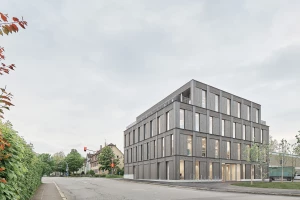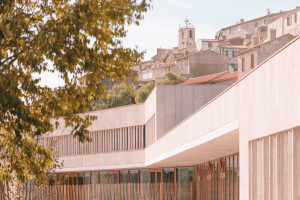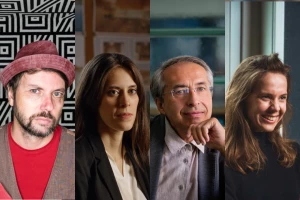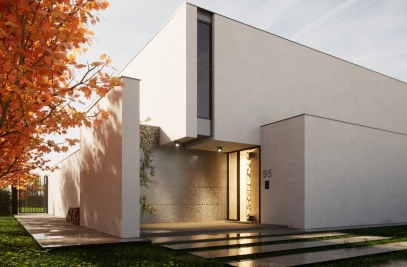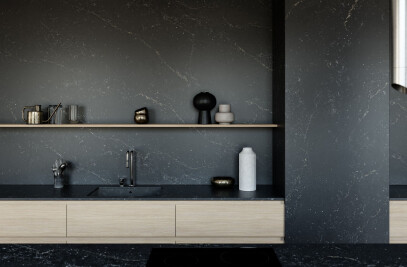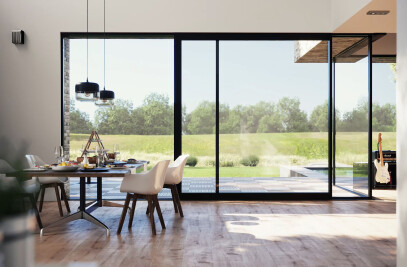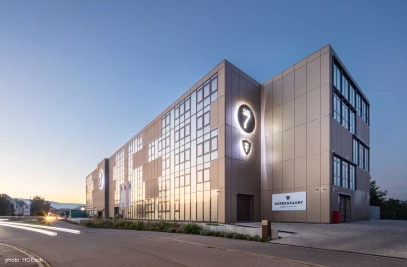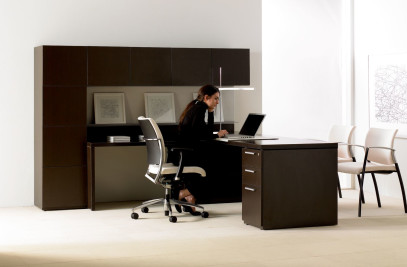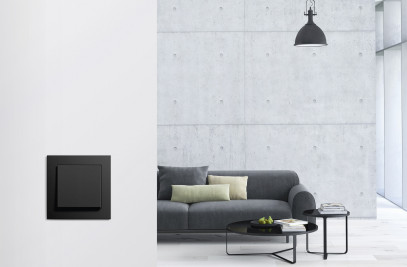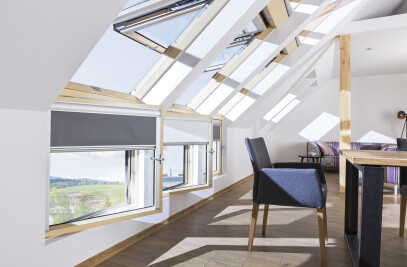Scandinavian sustainability leaders Snøhetta have completed Powerhouse Telemark, the 4th energy positive building in the Powerhouse series. The Powerhouse concept is the result of a diverse collaboration between Snøhetta and property company Entra, entrepreneur Skanska, environmental organization ZERO, and consulants Asplan Viak, who joined together to combine their expertise in research, design, and engineering to create ‘energy positive’ or ‘Powerhouse’ buildings, which produce more energy than they use as measured across their lifespan. Energy use is measured through energy costs embedded in design, construction, operation, and demolition, as well as the embodied energy held within construction materials.

The Powerhouse project arose out of a growing recognition of the importance of the energy and building sectors in innovating and leading in solutions to combat climate change. Accounting for over 40 percent of global industry’s heat trapping emissions combined, these sectors urgently need to go beyond reducing emissions to actively combatting them. The collaborative alliance behind the Powerhouse portfolio seeks to push building industry standards toward sustainability and social and environmental responsibility.

Powerhouse Telemark is an 11-story building located in the historic industrial city of Porsgrunn in the county of Vestfold and Telemark, a district with a rich industrial history as home to one of the early 19th Century’s largest hydropower plants. Symbolically, the building represents both a continuation of and a reimagining on the role of energy in generation and utility. The south-east facing façade and roof of the building together will generate 256 000 kwh annually, representing twenty times the energy use of an average Norwegian household, with any surplus energy being sold back to the grid.

The aesthetic of the structure is industrial yet modern, the building is skewed and slightly conical but still geometric in form, with a 45-degree tilting notch on the east façade. The west and south-east facing facades are site-responsive, angled to maximize sun and shading capacities, with the concurrent benefits of providing sweeping views and creating flexible and unique floorplans within. These spaces stand in contrast to the levelled north-eastern side of the structure which houses more traditional, enclosed offices. Throughout the interior, smaller, secluded spaces are strategically located away from sun exposed facades to reduce the need for interior cooling.

The roof rests on a gentler 24-degree tilt, and surpasses the extremities of the volume, which in addition to enhancing the structure’s striking silhouette also expands the available roof surface to maximise solar energy creation (harvested via the roof’s photovoltaic canopy as well as the PV-cell clad SE facade).

Wooden baluster cladding covers the west, north-west and north-east facades, providing natural sun shading. Behind this, the building is clad with Steni façade panels to unify the volume. Passive house design is infused throughout, with triple isolated windows maximizing insulation. Concrete slabs add density, evoking traditional stone construction and storing thermal heat from daylight sun exposure and emitting it overnight. Geothermal wells dug 350 metres underground further bake ‘low-tech’ sustainability solutions into the design to maximize tenant comfort whilst minimizing non-renewable energy consumption. Vertical glass slots in the roof maximize natural light for the upper floors.

Powerhouse Telemark has also harnessed leading-edge design strategies to create built-in customizations that are responsive to unexpected and real-world changes to traditional workspace needs, such as those created by the Covid-19 pandemic. Standardization drives the interior design, with glass walls and office dividers, flooring, lighting, bathrooms, and kitchenettes sharing colour, materiality, and a general design aesthetic across all floors. A foliating signage system allows customizable yet uniformly tailored branding. This uniformity minimizes the need for renovations and subsequent unnecessary waste as tenants come and go, as well as providing flexible and adaptable floorplans and easy reprogramming of spaces via expansion or downsizing as client and tenant need may require. Spaces are thus able to transition from office spaces to desk spaces to resource spaces depending upon the toggling required between remote and on-site functions.

In addition to office and co-working spaces, the interior program includes a communal staff restaurant, penthouse meeting areas, and a roof terrace overlooking the neighbouring fjord. The ground and top floors are connected by two large staircases winding from the reception area to the penthouse. At the ninth floor, a distinctive straight wooden staircase visually ties the restaurant and penthouse meeting rooms together and leads visitors to the terrace.

Sustainability was also a key consideration in choosing interior materials, with resilient and low-embodied energy material being prioritized. Local woods, gypsum, and environmentally friendly and untreated concrete feature throughout. Hip carpet tiles are made of 70% recycled fishing nets, and wooden parquet flooring is composed of ash from wooden debris – both of which provide great conversation fuel for drawing curiosity into sustainability conversations.

BREEAM (Building Research Establishment Environmental Assessment Method) Certification is a benchmark standard for all Powerhouses, and Powerhouse Telemark earned the BREEAM Excellence award for reducing its yearly net energy consumption by 70 percent as compared with similar projects. BREEAM is the leading global sustainability assessment method for built projects, as measured through the asset’s environmental, social, and economic sustainability, with these metrics tracked across construction, operations, and refurbishments across the building lifecycle. This means not only that BREEAM Certified buildings enhance the well-being of their inhabitants as well as protecting natural resources and attracting eco-conscious investors, but also serve as models of sustainable architecture and design and leaders in decarbonizing construction.

Powerhouse Telemark stands in form and function as a dramatic reimagining of how we conceive, harvest, and use energy in the built environment, and through using standardization as a core interior design principle, paradoxically embeds flexibility into disparate spatial functions through adaptable and scalable workspaces. It stands as both beacon and model of sustainable design and invites us to imagine the future of responsive workspaces with the ability to efficiently adapt to rapidly changing global circumstances.




